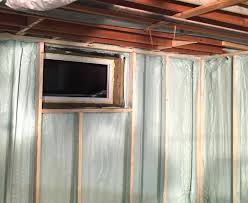How Residential spray foam beneficial for home insulation?
Having your home well-insulated is one of the most important factors to reduce your heating and cooling costs. So, which is the best insulation for your residence?
Of course! It is the residential spray foam!
Spray Foam
Open and closed cells are the two types of foam insulation. Both have different propellant agents that are added, and both are made from polyurethane material. To make the off-gases friendlier to the environment, some are made from biodegradable materials such as soybeans. To block air infiltration combined with a high R-value, foam is probably the best insulation.
The price of spray foam varies depending on the thickness of the walls and the type of foam used and is installed by professionals. If you can afford the cost, then spray foam insulation is probably the best overall insulation on the market. Elimination of air filtration, keeping mold, allergens, and it does not deteriorate or sag.
Open-cell Foam
In the residential application is where the open-cell form is massively used. It is easier to work with after it is in place and is inexpensive to install. To make a great roof deck insulator, an open-cell allows water to penetrate. You can locate the roof leaks before the decking deteriorates if the water is allowed to penetrate. It is mainly in sunny locations, which is the biggest benefit of the open cell is the heat transfer. For the walls, it is quite true. Your home will stay cool when it is cool. With the installation of spray form insulation, the warranty of the roof material is not voided.
Closed-cell foam
The closed-cell form can support some weight without compression as it has much more structural components to it. It is an excellent insulator for basement and crawls walls where water can be a huge issue as the closed-cell does not allow water to penetrate here. The closed-cell foam is very rigid and tough to work with after installation as it has a higher R-value per inch. In the commercial application is where it is used immensely. Even in the homes, it has good and useful applications.
Some Benefits of residential spray foam
The molds are kept out of the walls with the help of foam insulation. Due to the thermal loop effect, mold occurs in the walls with batt insulation. It is coming in contact with the cooler interior surface of the drywall causing moisture to form. This is where the heat penetrates the exterior wall. For the growth of the mold, moisture above 25% can offer you an environment here. Spray foam has no air gaps in which moisture can form as it blocks the heat transfer.
Combining a couple of inches of closed-cell foam with fiberglass batt insulation installed over the foam to get the exceptional air-blocking value of foam with the high R-value and lower cost of fiberglass insulation is one way to combat the higher cost of spray foam.
We are all looking to achieve a more comfortable home. When combined with the appropriate HVAC system, spray foam can give you warmth in the winter and cooling in summer. When your home is better insulated with less air infiltration, these systems can be quite smaller in size.


Comments
Post a Comment